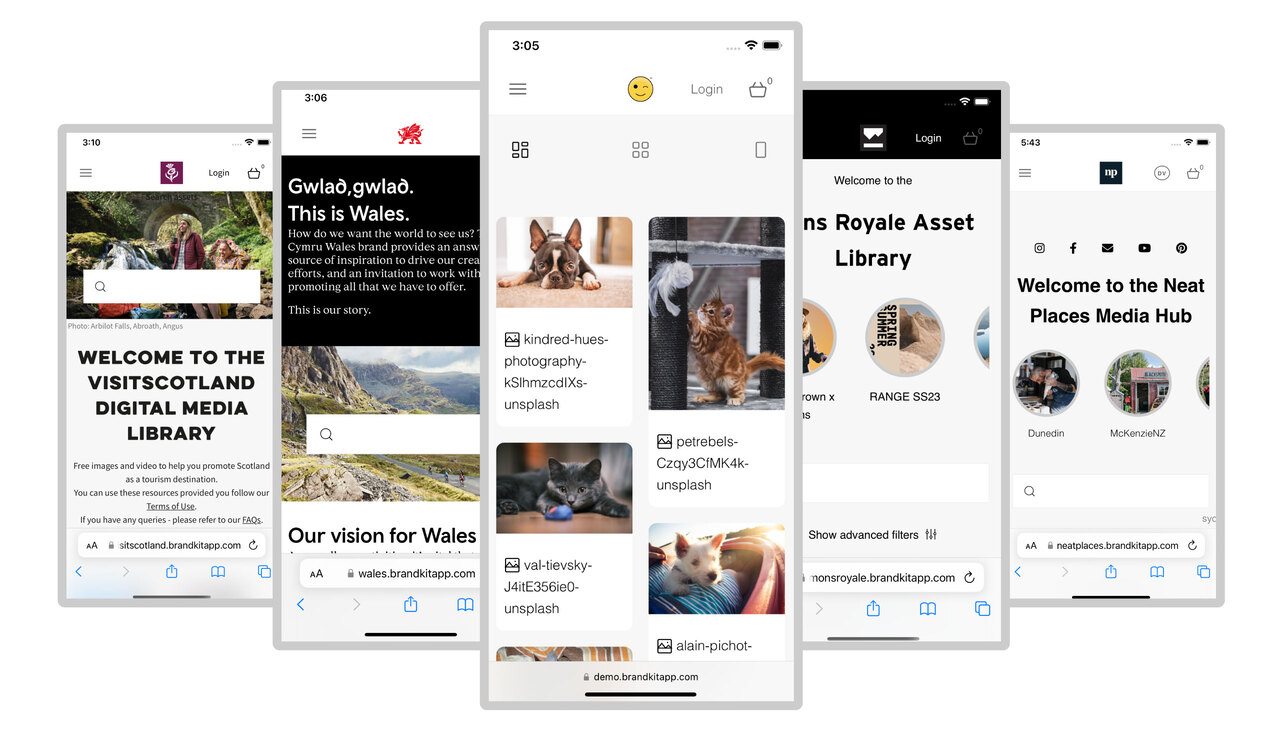How to Use a Brand Portal for your Business

(Image showing Brand Portals examples together - courtesy of Brandkit)
Introduction:
In today’s competitive business landscape, maintaining a consistent and impactful brand presence is essential for success. A brand portal can be a valuable tool to help businesses effectively manage and distribute their brand assets, ensuring brand consistency and streamlining the workflow for marketing and design teams.
In this blog post, we will explore the benefits of using a brand portal and provide practical tips on how to leverage this tool for your business’s branding needs.
Understanding the Brand Portal:
A brand portal is a centralized digital platform that serves as a hub for all your brand-related assets and guidelines.
It allows you to store, organize, and distribute key brand elements such as logos, fonts, colors, imagery, and templates. The portal ensures that all stakeholders, including internal teams, external partners, and vendors, have access to the latest and approved brand assets, ensuring consistency in all communications.

(Image showing several different Brand Portals courtesy of Brandkit)
Benefits of Using a Brand Portal:
-
Consistent Branding: One of the primary advantages of a brand portal is the ability to maintain consistent branding across all touchpoints. By providing easy access to approved assets and style guidelines, you can ensure that all marketing materials, presentations, social media posts, and other collateral adhere to your brand’s visual identity and messaging.
-
Time and Resource Efficiency: With a brand portal, you can eliminate the need for constant back-and-forth communication between teams or with external vendors when seeking brand assets. Instead, all stakeholders can access the portal to download the required assets, saving time and effort. This streamlined process allows teams to focus on value-added activities, such as creating impactful campaigns and strategies.
-
Improved Collaboration: A brand portal encourages collaboration by providing a central platform where team members from different departments can contribute, review, and share their work. It promotes cross-functional communication and ensures that everyone is working with the latest and approved brand elements, reducing the risk of inconsistencies or outdated materials.
-
Brand Guidelines and Training: Brand portals often include detailed brand guidelines that outline how to use various brand assets correctly. These guidelines serve as a valuable resource for both internal teams and external partners, ensuring that everyone understands and adheres to the brand’s visual and tonal standards. Additionally, brand portals can offer training materials to educate employees and stakeholders about the brand’s values, voice, and positioning.
Tips for Utilizing a Brand Portal Effectively:
-
Organize and Categorize: Ensure that your brand portal is well-organized and user-friendly. Create clear categories and collections for different asset types, making it easy for users to find what they need quickly. Consider using intuitive naming conventions and adding tags or keywords to facilitate searchability.
-
Regularly Update and Review: Continuously review and update your brand portal to ensure that it reflects the latest brand assets, guidelines, and templates. Remove or archive outdated materials and provide notifications or newsletters to inform users about any significant updates or changes.
-
Access Control and Permissions: Implement access controls and permissions to ensure that only authorized individuals have access to sensitive brand assets. This ensures data security and reduces the risk of unauthorized use or modification of brand elements.
-
Promote Adoption and Training: Encourage employees and stakeholders to use the brand portal by highlighting its benefits and providing training or onboarding sessions. Offer resources such as tutorials, FAQs, or user manuals to assist users in navigating the portal effectively.
-
Gather Feedback and Iterate: Regularly seek feedback from users regarding their experience with the brand portal. Use this feedback to identify areas for improvement and make necessary adjustments to enhance usability and functionality.
Conclusion:
In an increasingly fast-paced and digital business environment, a Brand Portal can be a game-changer for effectively managing and distributing brand assets. By utilizing a brand portal, businesses can ensure consistent branding, save time and resources, improve collaboration
Need a great platform to build your Brand Portal - check out Brandkit.
Happy branding :)
How to Use a Brand Portal for your Business
In this blog post, we will explore the benefits of using a brand portal and provide practical tips on how to leverage this tool for your business’s branding needs.
